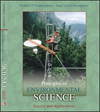 |  Principles of Environmental Science William P. Cunningham,
University of Minnesota
Mary Ann Cunningham,
Vassar College
Biomes and Biodiversity
Learning ObjectivesAfter studying this chapter, you should be able to
I.recognize the characteristics and general distribution of major biomes, and understand the most important factors that determine biome distributions. |
 |  |  | II.evaluate the degree of disturbance of major biomes, and identify the biomes that are most important for human activities and for biodiversity protection. |
 |  |  | III.define biodiversity and explain its importance. |
 |  |  | IV.report on the total number and relative distribution of living species on the earth. |
 |  |  | V.describe how human activities cause biodiversity losses. |
 |  |  | VI.identify regions and ecosystems of high biodiversity. |
 |  |  | VII.evaluate the effectiveness of efforts to protect endangered species. |
|



 2002 McGraw-Hill Higher Education
2002 McGraw-Hill Higher Education